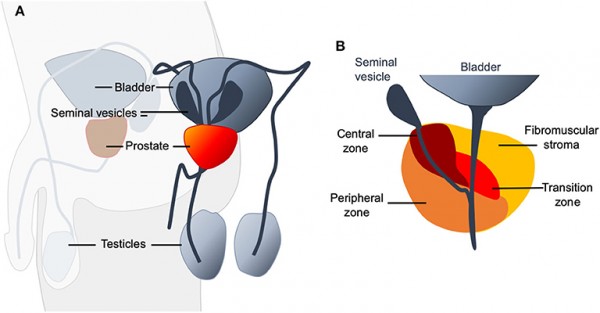Two procedures to treat men with prostates are both effective, new research has shown.
A benign shrink prostate enlargement is not cancer and is not usually a serious threat to health.
But it is common in men over 50 and some need surgery to treat urinary symptoms caused by the growing prostate.
The most common procedure is transurethral resection of the prostate (TURP) which is usually successful but can lead to complications such as bleeding in some men.
The UNBLOCS trial compared the effectiveness of TURP to a new laser procedure which might reduce a patient's hospital stay and cause fewer side effects.
The thulium laser, ThuVARP, vaporises excess prostate.
Men who needed a prostate operation were asked to consent to either procedure without knowing which one they would receive.
One year later, men in both groups were satisfied with their surgery.
They reported similar improvements in their urinary symptoms and quality of life.
There was no difference between the two procedures in terms of hospital stay or complications.
However, men in the TURP group achieve a faster urinary flow rate (they could pass higher volumes of urine more quickly).
TURP was also slightly more cost-effective and faster to perform than the laser procedure.
What's the issue?
The prostate is a gland in men that surrounds the urethra, the tube that carries urine from the bladder through the penis.
As men get older, it is common for the prostate to become enlarged.
This does not have serious implications for health but it can cause urinary problems.
These include slow flow and urinary retention (being unable to completely empty the bladder).
25,000 men have an operation to reduce the size of their prostate every year, making it one of the most common procedures performed on the NHS.
The usual 'gold standard' surgery for prostate enlargement is transurethral resection of the prostate (TURP).
TURP involves removing part of the prostate gland using a device passed through the urethra.
It is usually successful, but it can sometimes cause complications such as bleeding during the operation and prolonged hospital stay.
Alternative techniques, such as surgery involving laser, have been developed over the last 20 years.
But uptake has been relatively slow in many parts of the world, including the UK.
Laser procedures could have advantages such as a lower risk of complications and less time in hospital.
Researchers wanted to compare TURP to the thulium laser technique, ThuVARP, which vaporises and cuts excess prostate.
It is called thulium laser transurethral vaporesection of the prostate (ThuVARP).
What's new?
The UNBLOCS trial, led by researchers at the Bristol Urological Institute in conjunction with Bristol University Trials Centre, included 410 men from seven UK hospitals.
They had lower urinary tract symptoms or urinary retention and were treated with either ThuVARP or TURP surgery.
Patients were not told which of the two procedures they were going to have.
The trial found that, one year after surgery:
both procedures relieve urinary symptoms
both procedures improved urinary flow rate but TURP was more effective than ThuVARP
men reported similar quality of life and sexual symptoms after both procedures
men in both groups said they were satisfied with the surgery
the length of hospital stay and number of complications were similar in both groups
TURP was slightly more cost-effective and quicker to perform than the laser technique.
Why is this important?
An enlarged shrink prostate can cause two main symptoms of the lower urinary tract: voiding (slow flow) and urinary retention.
Prior to this research, some experts believed surgery did not help men with urinary retention.
However, the trial found both prostate procedures are effective for treating both voiding symptoms and urinary retention.
Although previous research suggested that the laser procedure would lead to fewer complications and a reduced hospital stay compared to TURP, this was not seen in the study.
The new findings from Bristol suggest hospitals who already performed TURP do not necessarily need to invest in equipment and training for the ThuVARP laser procedure.
What's next?
The results of this study could be used to update urology guidelines on the risks and benefits of both procedures, for example NICE guidelines on lower urinary tract symptoms in men and EAU guidelines on the management of non-neurogenic male LUTS .
This will give patients more information about their treatment and help surgeons choose the best procedure.
An unanswered question is what happens several years after treatment.
It is known that the prostate starts to grow again after surgery and about one in ten men need a repeat procedure within ten years of having TURP.
Researchers are hoping to secure funding for a follow-up trial to compare how quickly the prostate grows back in men who had either TURP or ThuVARP procedures.

